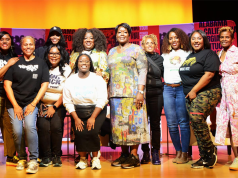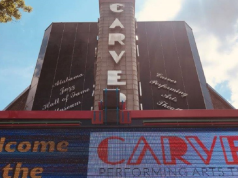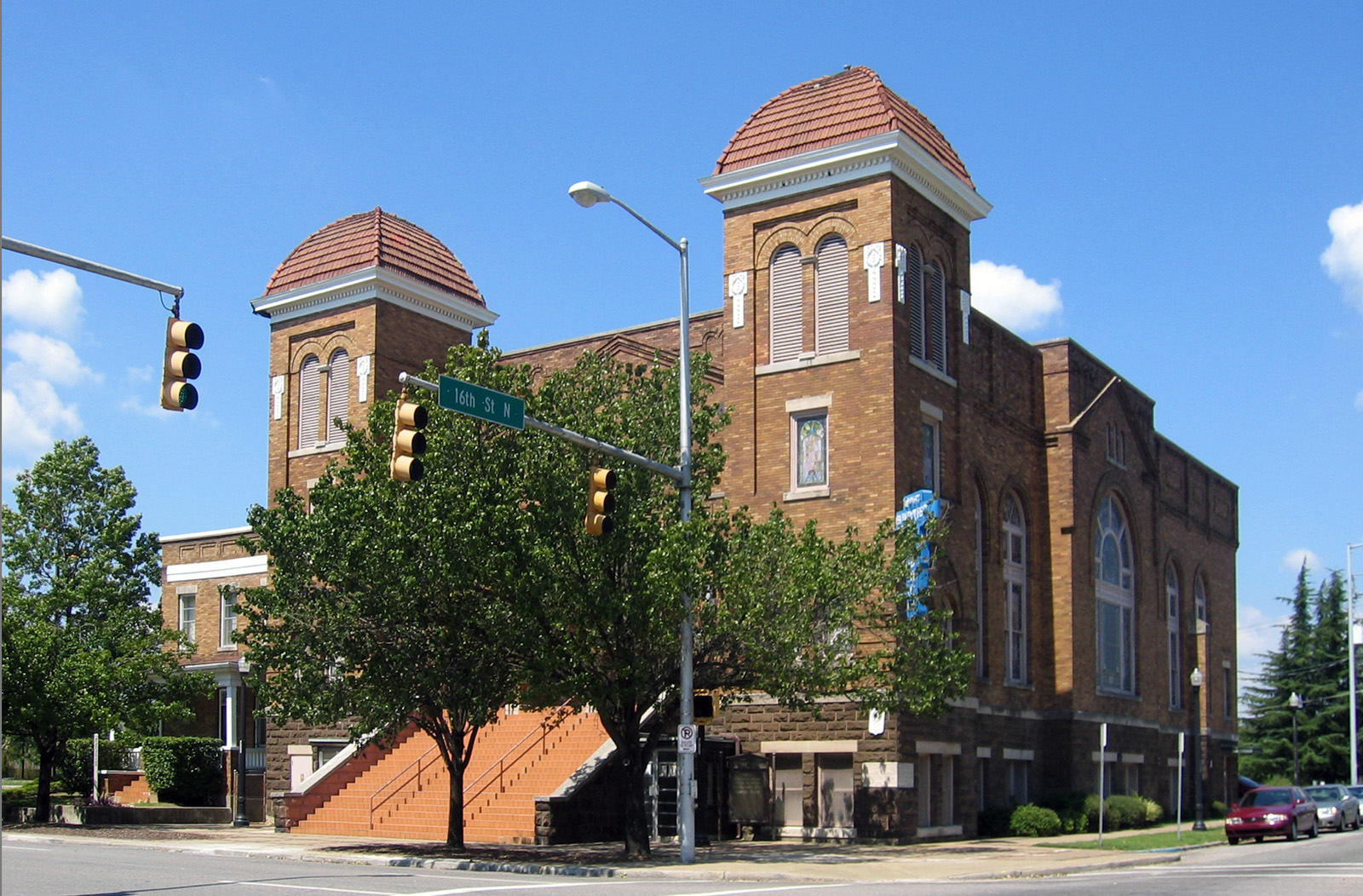
By Monique Jones
The Birmingham Times
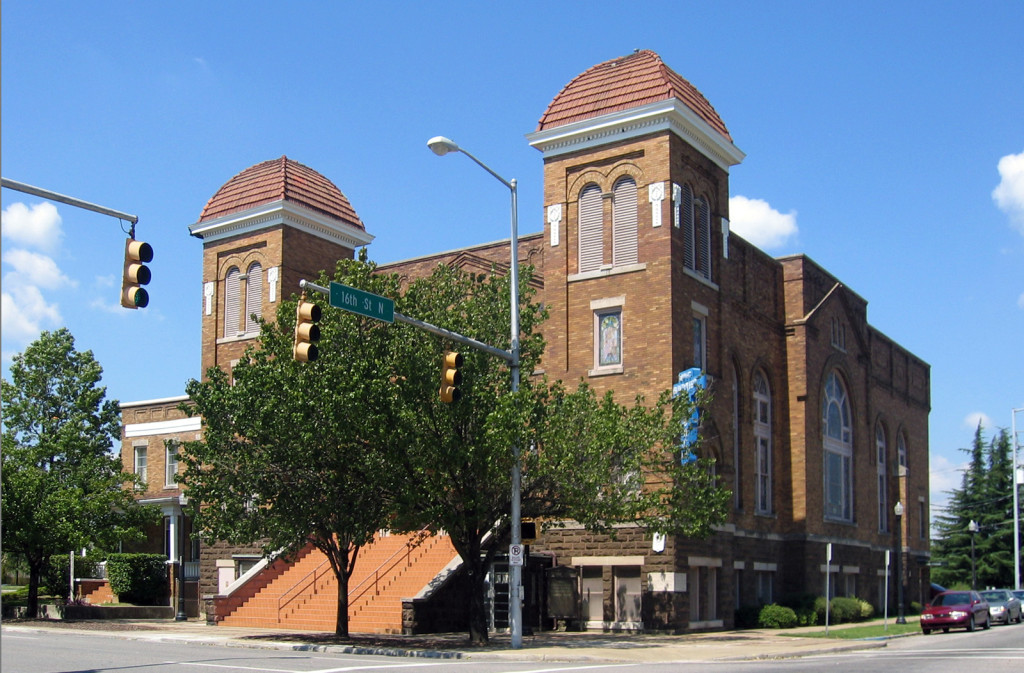
Just before leaving office in January 2017, President Barack Obama designated two new national monuments in Alabama to honor our country’s civil rights history. There was much joy surrounding the Birmingham Civil Rights National Monument in Birmingham and the Freedom Riders National Monument in Anniston, but there are other landmarks associated with African-American history throughout the state.
Since the beginning of the 20th century, the U.S. Government and most states have identified historic landmarks. Here are the African-American National Historic Landmarks in Alabama, as certified by the National Park Service’s National Register of Historic Places. (To see more, visit BlackPast.org; search for “National African American Historic Landmarks by State.”)
Birmingham
Sixteenth Street Baptist Church
The Sixteenth Street Baptist Church was organized in 1873 as the First Colored Baptist Church of Birmingham, Ala. The church has moved three times, moving to its third and final location at 16th St. and 6th Ave. N in 1880. The church commissioned a new building in 1884 with the help of Wallace Rayfield, Alabama’s only black architect, and construction was supervised by T.C. Windham, a black contractor from Birmingham who also was a member of the church and served for a time as chairman of the church’s trustee board. The church in its present state was completed in 1911.
Throughout its history, Sixteenth Street—which became known as “Everybody’s Church”—was used as a meeting place, social center, and lecture hall for black Birmingham citizens. It welcomed notable black Americans, including William Edward Burghardt (W.E.B.) DuBois, Mary McLeod Bethune, Paul Robeson, and Ralph Bunche. The church also served as a training center and a departure point for marches during the civil rights movement.
On Sept. 16, 1963, four young girls—Addie Mae Collins, Cynthia Wesley, Denise McNair, and Carole Robertson—were killed and 22 others were injured when the church was bombed by Ku Klux Klan members. After the tragedy, the church received the sympathy of the nation and the world, with more than $300,000 contributed to a rebuilding fund. A stained-glass window featuring an image of a black crucified Christ, designed by Welsh artist John Petts, was gifted to the church by the people of Wales. The church reopened for service on Sunday, June 7, 1964. None of the bombers were indicted until 1977, when Robert Chambliss was sentenced to life in prison. Thomas Blanton was convicted in 2001, and Bobby Frank Cherry was convicted in 2002; both were sentenced to life in prison. Herman Cash died in 1994 before ever being charged.
Sixteenth Street Baptist Church, which still serves the community, was designated a National Historic Landmark in 2006.
Mobile
The Campground
The Campground Historic District played an important role in the historic development of the predominately black community of Mobile, Ala., since the 1860s. The district is named for the Old Camp Ground, a Confederate encampment that occupied the area during the Civil War. The Confederacy abandoned the area after the Union entered the city, and the area became one of many in and around Mobile where freed slaves settled.
Black working-class families rented housing from white landowners, and the settlement became a working-class neighborhood. Despite segregation, several residents became successful business owners on Davis Avenue, now known as Martin Luther King Jr. Avenue. One of those business successes is Dr. James A. Franklin, the first African-American to graduate from the University of Michigan in 1914 and the namesake for the Franklin Memorial Clinics. After segregation, the wealth of Davis Avenue declined and residents relocated, but thanks to community and civic leaders The Campground has been revitalized and preserved.
The Campground Historic District became part of the National Register of Historic Places in July 2005.
Montgomery
Dexter Avenue King Memorial Baptist Church
Dexter Avenue Baptist Church was founded as the Second Colored Baptist Church in 1877 in a slave trader’s pen on Dexter Avenue, formerly known as Market Street, in Montgomery, Ala. The current building was erected between 1883 and 1889.
In 1887, the first registration of students for the Normal School for Colored Students (now Alabama State University) took place in the church’s basement. This first moment of community service was just the beginning for the church, which served as a meeting place for the residents.
Dexter Avenue Baptist was particularly active during the civil rights movement, when it was led by the Rev. Dr. Martin Luther King Jr., who served as its pastor between 1954 to 1960. Much of Montgomery’s civil rights history of the 1950s, most notably the 1956 Montgomery Bus Boycott, was directed by King from his office in the church’s basement.
The church was designated a National Historic Landmark in June 1974 and was added to Montgomery’s list of historic sites July 1976. The church itself honored King in 1978 by renaming the church Dexter Avenue King Memorial Baptist Church. The Dexter Parsonage Museum, which was home to the church’s 12 pastors between 1920 to 1992, was added to the National Register of Historic Places in 1982.
Montgomery Greyhound Bus Station
The Montgomery Greyhound Bus Station was one of the final planned stops for the May 1961 Freedom Ride from Washington D.C., on its way to New Orleans, La. The group had already faced violence from an angry white mob and Ku Klux Klan members, and several riders had been severely beaten. The Congress of Racial Equality (CORE) agreed to halt the Freedom Ride in Birmingham on May 14, 1961, with the remaining riders flying to New Orleans. The Nashville Student Movement, including activist Diane Nash and future Congressman John Lewis, took up the Freedom Ride to Montgomery, Ala., with Jackson, Miss., as the final planned destination. The riders were escorted by state troopers after an intervention by Sen. Robert Kennedy, but were left unescorted after reaching the Montgomery city limits.
On May 20, 1961, the Freedom Riders were attacked by a local mob at the Montgomery Greyhound Bus Station. Several riders were injured, including William Barbee, who later died after being paralyzed from his injuries. The events of the day attracted national and international attention. After the property discontinued its use as a bus station, the building was saved from demolition and its façade was restored. The site was leased to the Alabama Historical Commission, and in 2011 the property became the Freedom Rides Museum.
In 2011, the museum was listed on the National Register of Historic Places. And in 2012, it won a National Preservation Award from the National Trust for Historic Preservation.
U.S. Post Office and Courthouse–Montgomery
The U.S. Post Office and Courthouse–Montgomery was built in 1933. It is located near the Montgomery Greyhound Bus Station, where Freedom Riders were attacked in 1961.
Many key civil rights cases were heard in this building, particularly the U.S. District Courtroom, where Judge Frank M. Johnson presided. Johnson, who was appointed by President Dwight Eisenhower, ruled on several cases that changed the course of the civil rights movement, including litigation concerning the 1955 Montgomery Bus Boycott. In 1956, he ruled that segregation on Montgomery’s buses was unlawful. And in 1965, he ruled that it was legal for the march from Selma to Montgomery to take place.
Johnson was the first judge to order that African-Americans be added to county voting rolls, and he wrote Alabama’s first school desegregation decree. Johnson also prohibited segregation in transportation centers, libraries, and the agricultural extension service. Because of his rulings, he and his family were often at risk, and his mother’s home was bombed.
The courthouse was renamed the Frank M. Johnson Jr. Federal Building and U.S. Courthouse in 1992, in honor of Johnson’s contributions to the civil rights movement. In 1998, the building was added to the National Register of Historic Places. It earned its designation as a National Historic Landmark in 2015.
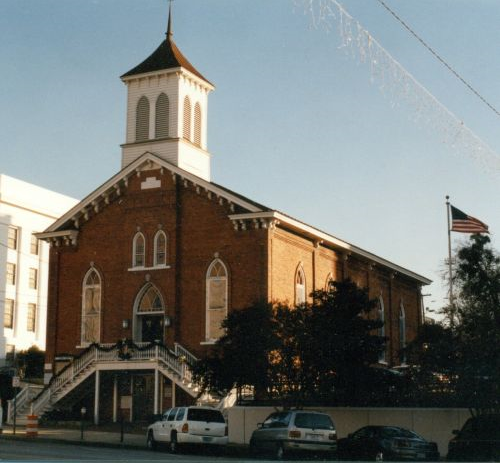
(Quintard Taylor, courtesy photo)
Selma
Brown Chapel AME Church
Brown Chapel AME Church in Selma, Ala., was built in 1908 by black architect A.J. Farley. The church served as a starting point for the Selma-to-Montgomery marches and played a major role in events that led to the adoption of the Voting Rights Act of 1965.
Brown Chapel AME Church was the host church for the Southern Christian Leadership Conference (SCLC) for the first three months of 1965. On March 7, 1965, 600 black protesters started from the church to march toward the state capital in Montgomery, Ala., to protest the lack of voting rights. The march, led by Hosea Williams of the SCLC and John Lewis of the Student Nonviolent Coordinating Committee (SNCC), made it to Selma’s Edmund Pettus Bridge, where mounted troopers attacked the protesters. Footage from the day’s events were aired across the nation on television in a special report, and the images led to many coming to Selma to participate in another attempt to march to the capital. The Rev. Dr. Martin Luther King Jr. led symbolic marches to the bridge on March 9 and March 21. Then Federal Judge Frank M. Johnson Jr. overruled Gov. George Wallace’s ban on protesting, and King led a five-day march from Selma to the State Capitol Building in Montgomery. The marches and the national attention paved the way for President Lyndon Baines Johnson to sign the Voting Rights Act of 1965 five months later.
Brown Chapel AME Church was added to the Alabama Register of Landmarks and Heritage in June 1976 and was designated a National Historic Landmark in February 1982.
Edmund Pettus Bridge
The Edmund Pettus Bridge in Selma, Ala., carries passengers across U.S. Route 80 over the Alabama River. The bridge, erected in 1940, is named after Edmund Winston Pettus, a Democratic U.S. Senator from Alabama, a Confederate brigadier general, and grand dragon of the Alabama Ku Klux Klan. It is noted for being the site of a violent encounter during the 1965 Selma-to-Montgomery marches, an event that was influential in the passage of that year’s Voting Rights Act.
In March 1965, a group of marchers protesting the lack of voting rights for African-Americans in Selma, Ala., were attacked on the bridge by armed policemen. During the clash, which became known as “Bloody Sunday,” 17 people—including future U.S. Congressman John Lewis and local activist and organizer Amelia Boynton—were severely injured and hospitalized; 50 others were treated for lesser injuries. Images from the attack were televised around the country, and a photo of an unconscious Boynton was reprinted in newspapers. The result was an outpouring of national support and, eventually, passage of the 1965 Voting Rights Act.
The Edmund Pettus Bridge was declared a National Historic Landmark in March 2013.
Talladega
Swayne Hall
Swayne Hall is the oldest building on the campus of Talladega College, Alabama’s oldest private historically black liberal arts college. The Talladega, Ala., building, completed in 1857 with the use of slave labor, originally housed a Baptist men’s academy. Talladega College was founded in 1865 by two former slaves, Thomas Tarrant and William Savery, who wanted to provide a school for the children of freed black families.
The college began as a one-room schoolhouse, but soon had to expand to accommodate the demand of new students. When the Baptist academy building was up for sale, Savery and Tarrant asked Gen. Wager Swayne, a Union Army general who later served as military governor of Alabama and assistant commissioner of the Freedmen’s Bureau, to buy it. Through the Freedmen’s Bureau, the building and an additional 20 acres were bought for $23,000, and the building was later renamed Swayne Hall. Many students from Talladega College became doctors, architects, lawyers, and other professionals to help establish Alabama’s new black middle class. Some of the college’s alumni also participated in the state’s civil rights movement.
Swayne Hall, which still serves the students of Talladega College, was established as a National Historic Landmark in 1974.
Tuscaloosa
Foster Auditorium, the University of Alabama
Foster Auditorium is a multipurpose facility at the University of Alabama in Tuscaloosa, Ala. Built in 1939, the auditorium was named after Richard Clarke Foster, who served as president of the university from 1937 to 1941.
The auditorium is the site of Alabama Gov. George Wallace’s infamous 1963 “Stand in the Schoolhouse Door,” when he tried to prevent Vivian Malone and James Hood from entering the university, an act that resulted in President John F. Kennedy calling in the National Guard to allow them entry. Wallace called the President’s decision “an unwelcomed, unwanted, unwarranted, and force-induced intrusion upon the campus.” But due to the combined power of the National Guard, federal marshals, and Deputy United States Attorney General Nicholas Katzenbach, Wallace was forced to let Malone and Hood register. The moment is one of the seminal moments in civil rights history.
Foster Auditorium was declared a National Historic Landmark in April 2005.
Tuskegee
Tuskegee Institute National Historic Site (Tuskegee University)
The institution now known as Tuskegee University was part of the expansion of education for blacks in the South following the U.S. Civil War. The historically black college first opened in 1881 as the Tuskegee Normal School for Colored Teachers. The first class featured a student body of 30 and one teacher, Booker T. Washington, the school’s founder. Under the name Tuskegee Normal and Industrial Institute, the school taught skills, such as printing, brick-laying, agriculture, carpentry, and other trades. The school also acted as a research institute, featuring the laboratory of the early-20th century’s most famous African-American scientist, George Washington Carver. While at Tuskegee, Carver developed new uses for crops, such as peanuts, including cosmetics, hair products, plastic, dye, and gasoline.
Tuskegee University, which still includes many of the original buildings constructed by the school’s first students, is both a National Historic Landmark and a National Historic Site. In 1965, it was designated a National Historic Landmark in recognition of its contributions and advancements in education. And in 1974, the U.S. Congress authorized the establishment of the Tuskegee Institute National Historic Site; it includes Booker T. Washington’s home, the Oaks, and the Carver Museum.
Tuskegee Airmen National Historic Site
Another Tuskegee, Ala., landmark is the Tuskegee Airmen National Historic Site at Tuskegee University, which includes Moton Field and the Tuskegee Army Air Field. The facilities were used as training grounds for the Tuskegee Airmen, the first black U.S. Air Force fighter pilots. Participants in the program became some of the most decorated Air Force pilots, and their achievements helped pave the way for full integration of the U.S. Armed Forces.
Moton Field—named for the second president of the Tuskegee Institute, Robert Russa Moton—was the only primary flight facility for African-American pilot candidates in the U.S. Army Air Corps during World War II. It
The Tuskegee Airmen National Historic Site at Moton Field was placed on the National Register of Historic Places in 1998.
NPS.gov, loc.gov, 16thstreetbaptist.org, talladega.edu, Tuskegee.edu, southernspaces.org, dexterkingmemorial.org, blackpast.org, contributed to this article.


